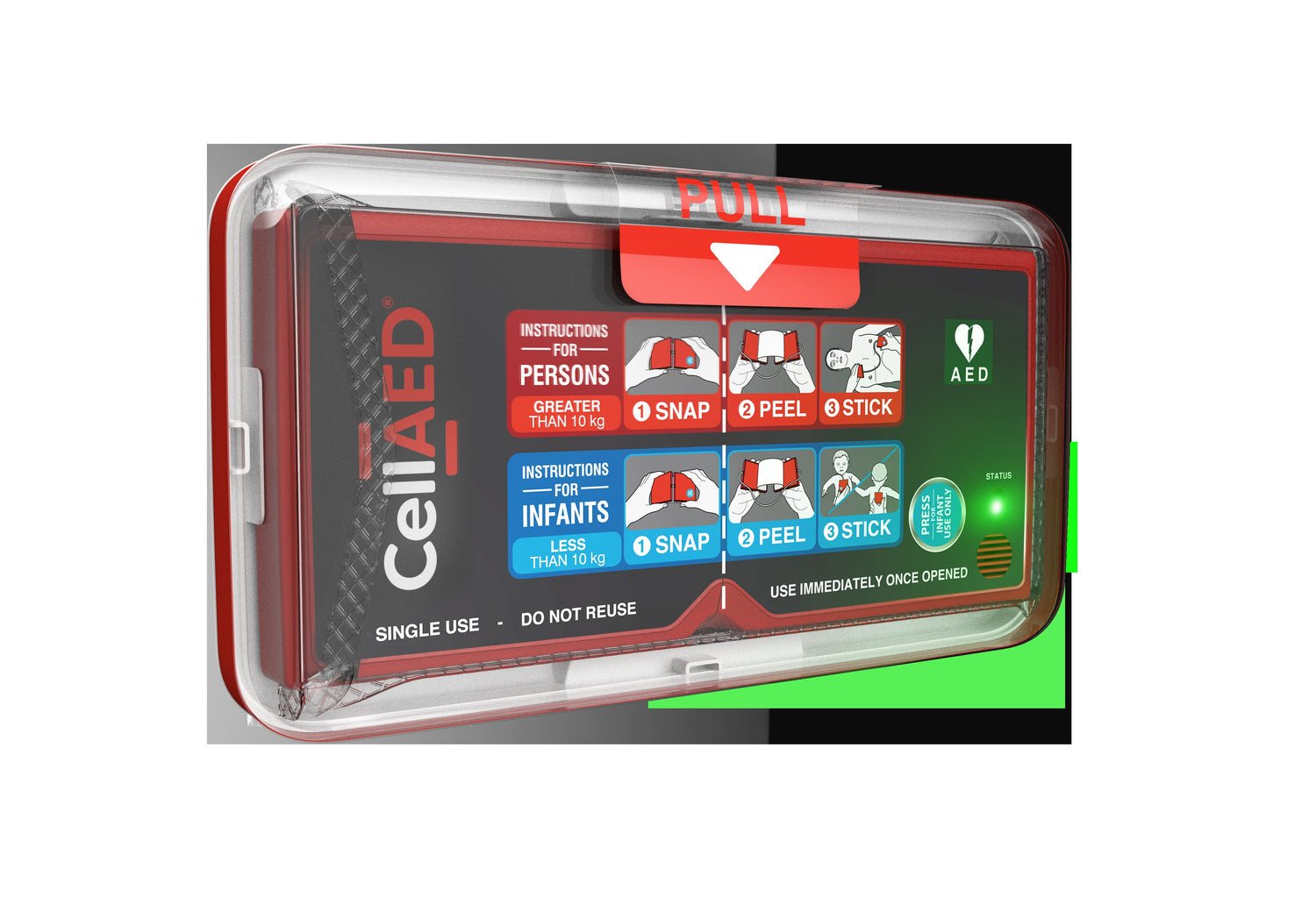CellAED® Defibrillator
Peace of mind, that hopefully you never have to use it, but you have something at hand that literally can save someone’s life.
The future is here, introducing CellAED®

Innovative Design for Portability and Efficiency
The innovative engineering behind CellAED®'s waveform enables an ultra-compact and highly portable design. Weighing a mere 450g, including its protective case, it's small enough to fit in a handbag or backpack.
The integrated, user-friendly design houses all the technology and components needed to deliver up to 20 effective shocks, including the battery and electrode pads, in a single, compact unit.
This eliminates the need for separate consumables, such as pads and batteries, required by conventional AEDs. It also reduces excess packaging and replacement costs associated with these consumables.
The Science of Defibrillation
Defibrillation works by delivering a controlled electrical shock that interrupts abnormal chaotic electrical activity in the heart. This "resets" (depolarizes) the heart cells, returning them to a rest state and providing an opportunity for the SA (Sinoatrial) node to regain control and initiate a coordinated, organized rhythm.
Beyond Energy: The Importance of Current
When comparing AEDs, it's crucial to consider more than just the energy (Joules) delivered. Current (Amperes) is the key determinant of effective defibrillation.
Traditional AEDs typically use around 120 - 150 joules to deliver a shock. However, the innovative CellAED® has halved this requirement, delivering an effective shock with just 75 joules, thanks to its patented low-energy biphasic waveform.
Balanced Biphasic Waveform for Optimal Results
CellAED®'s balanced biphasic waveform reduces the energy expended while maintaining the necessary strength and duration across both phases of the shock. This is essential for effectively treating arrhythmias associated with Sudden Cardiac Arrest (SCA).
This carefully balanced waveform minimizes the residual effects of defibrillation on heart cells, optimizing the energy required and reducing the chances of re-entering SCA after a shock is delivered.



